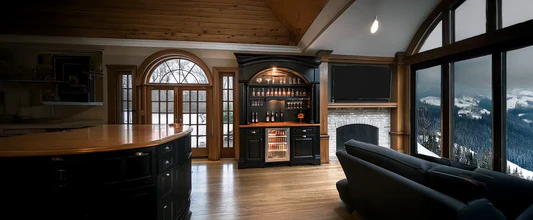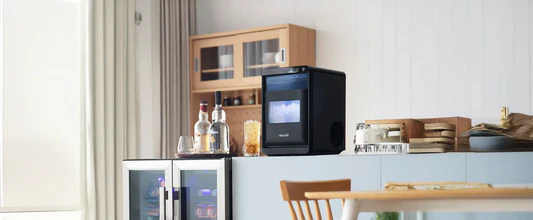Does Wine Go Bad? How to Make Your Favorite Vintage Last Longer
Picture yourself after a long day at work, kicking off your shoes and wandering wearily into the kitchen to pour a glass of your favorite wine. You definitely deserve it after putting out fires and sitting in traffic, and all that’s left to do is to pop the cork and fill the glass before settling into your chair for the night.
You’re just a moment away from calling it a day as you raise the glass to your lips and sip. And then it hits you. Your wine tastes sour and acrid, more like vinegar than the mellow, complex flavors you love.
If this has ever happened to you, you already know one of the dark secrets about your favorite vintage: wine definitely does expire. Like anything natural, wine doesn’t live forever. Eventually, anything carbon-based — you, me, fruit, and food — will decay. Wine happens to last much longer than many things, but it too will eventually degrade as microorganisms begin their slow process of consuming that nice bottle you had hoped to enjoy yourself.
Fortunately, there are ways to help your wine last longer and stay at its best. Understanding a bit about how wine breaks down and learning some best practices for proper storage of quality wines will help you avoid an unpleasant experience with a bottle gone bad.
Understanding Wine and Its Shelf Life
The Process Behind Wine: Why It Goes Bad
Before diving into specific expiration dates, it’s helpful to understand how wine is made and why it eventually expires. Wine is created through the process of fermentation, where yeast meets sugar in the grape juice and begins to consume it. As the yeast digests the sugar, it produces alcohol as a byproduct. This alcohol is what makes wine enjoyable while also acting as a preservative to some extent, preventing bacterial growth.
However, alcohol alone cannot preserve wine forever. Over time, air exposure allows certain bacteria, like acetobacter, to thrive. These bacteria convert alcohol into acetic acid, which is the main component of vinegar. This process, combined with oxidation, leads to spoilage, giving the wine sour or off flavors that are unpleasant to drink.
Why Alcohol Helps But Isn’t Enough
Alcohol inhibits most bacterial growth, making wine safer to store and consume than many other perishable items. Historically, wine was often safer to drink than water, particularly in times when clean water supplies were scarce. However, while alcohol slows the spoilage process, it doesn’t stop it entirely. Over time, even unopened bottles of wine will degrade due to chemical changes and slow oxidation through the cork.
Recognizing Spoiled Wine
How to Spot Bad Wine
Bad wine is usually easy to identify using your senses. First, take a sniff. A spoiled wine often smells like vinegar or has unpleasant, musty aromas instead of the fruity or earthy notes you were expecting. If the wine’s nose seems off, it’s likely spoiled.
Next, observe the wine visually. Sparkling wine should have visible bubbles that rise steadily to the surface, while red and white wines should appear clear and translucent. A brownish hue, murkiness, or sediment in still wine can indicate oxidation or spoilage.
Finally, if you’re still unsure, take a small sip. Spoiled wine will taste sour, bitter, or otherwise unpleasant. While drinking a sip of spoiled wine won’t harm you, it’s best to discard it if the flavor is off.
How Long Does Wine Last?
Unopened Bottles
Unopened wine bottles can last for years under proper conditions. Here’s a general guideline:
- White Wine: 1–2 years past the expiration date
- Red Wine: 2–3 years past the expiration date
- Cooking Wine: 3–5 years past the expiration date
Opened Bottles
Once opened, wine’s lifespan decreases significantly due to exposure to air and bacteria:
- White Wine: 1–3 days in the refrigerator
- Red Wine: 1–2 weeks in the refrigerator
- Cooking Wine: 1–2 months in the refrigerator
How to Store Wine Properly
Temperature and Environment
The key to preserving wine is maintaining stable conditions. The ideal storage temperature is around 55°F, which mimics the conditions of traditional underground wine cellars. Avoid storing wine in fluctuating temperatures or direct sunlight, as these can degrade the wine’s quality quickly.
Position Matters
Store wine bottles on their sides to keep corks moist and sealed. Dry corks can shrink and let air into the bottle, speeding up spoilage. However, once a bottle is opened, it’s better to store it upright to reduce the surface area exposed to air.
Investing in Wine Coolers
A wine cooler is a great investment for enthusiasts who want to preserve their bottles for years. Modern wine coolers provide consistent temperatures and often include UV protection to prevent sunlight from degrading wine.
Creative Uses for Leftover Wine
If you have leftover wine, don’t let it go to waste. Here are some ideas:
- Use red wine in pasta sauces for added depth of flavor.
- Deglaze a pan with white wine to create a delicious sauce.
- Freeze leftover wine in ice cube trays for cooking.
With proper storage techniques and a bit of creativity, you can ensure your wine lasts longer and remains enjoyable. Always trust your senses when evaluating whether wine is still good, and enjoy the process of discovering new ways to appreciate your favorite vintage.









